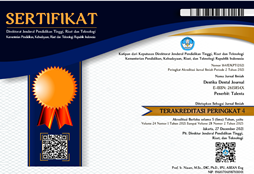EFFECT OF DIFFERENT NUMBER OF THERMAL CYCLING ON MARGINAL LEAKAGE OF CLASS V RESTORATION USING NANO TOOTH COLOURED MATERIALS
EFEK SUHU YANG BERBEDA TERHADAP KEBOCORAN MARGIN TAMBALAN KELAS V DARI BAHAN PEWARNA GIGI NANO TOOTH COLOURED MATERIALS
DOI:
https://doi.org/10.32734/dentika.v15i1.1680Keywords:
microleakage, thermocycling, dental nano compositeAbstract
Nano tooth coloured materials may have been produced as an ideal restorative material, however, thermally induced stresses may lead to microleakage between restorative material and tooth structure which may cause unwanted complications. Thermocycling has been an important method to emulate the thermal changes of the oral cavity. This study was aimed to investigate the effect of increasing number of thermal cycles on marginal leakage of nano tooth coloured materials. A total of 56 Class V cavities was prepared on the buccal surface of the extracted single rooted human premolars and restored with either Filtek Z350 (3M-ESPE, USA) or Ceram X (Dentsply, Germany). The samples were then divided into four groups with (n=7): 1) 0 thermocycle, 2) 500 cycles, 3) 5,000 cycles and 4)10,000 cycles. All samples were immersed in 2% methylene blue dye for 4 hours at room temperature, sectioned and viewed under stereomicroscope for dye penetration. Data were analyzed using T-test and One-way ANOVA and Post-hoc Scheffe with p<0.05 considered to be significant. Microleakage was only evident in both materials at 5,000 cycles above. The results showed that there was a significant difference in microleakage between 5,000 and 10,000 cycles for both materials (Filtek Z350: p<0.001; Ceram X: p<0.001). However, there was no significant difference in microleakage between Filtek Z350 and Ceram X at 5000 cycles (p=0.194) and at 10,000 cycles (p=0.499). As conclusion, microleakage increases with the duration of thermal cycling in both nano-tooth coloured materials. Both materials showed similar pattern of microleakage when challenged to a higher number of thermal cycles.


















